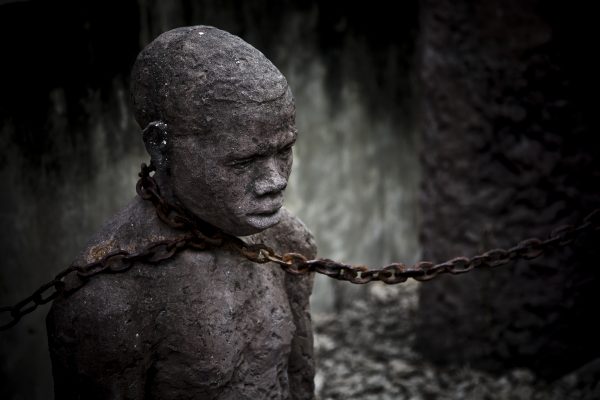For almost two and a half years Imam Hanbal was in prison and tortured. During this tenure, Imam Hanbal was often brought to the Caliph’s palace in chains and he was asked to agree with the Mutazila creed but he remained steadfast. Such valiant and noble firmness for the sake of Islam uplifted his stature and the fame of Imam Hanbal spread around the entire Muslim Ummah like wildfire.
For almost two and a half years Imam Hanbal was in prison and tortured. During this tenure, Imam Hanbal was often brought to the Caliph’s palace in chains and he was asked to agree with the Mutazila creed but he remained steadfast. Such valiant and noble firmness for the sake of Islam uplifted his stature and the fame of Imam Hanbal spread around the entire Muslim Ummah like wildfire.
As promised, Allah has sent down on this earth, from time to time, outstanding scholars to protect His religion from distortion. Such scholars were pious, profoundly knowledgeable, and an embodiment of courage. One of such names is definitely Imam Ahmad ibn Mohammad ibn Hanbal – and is considered by many as the man who disregarded everything to follow the traditions of this religion.
Imam Hanbal was born in 164 Hijri (778 AD) in Baghdad. His father passed away when he was only 3 years old and was brought up entirely under the supervision of her mother who played a crucial role for Imam Hanbal to become what he became.
The Imam started his education in Baghdad, and subsequently, he travelled to Makkah, Madina, Kufa, Basrah, and Yemen to acquire knowledge from different scholars. His first teacher of Hadith was Sheikh Abu Yusuf who was one of the most famous students of Imam Abu Hanifa. The person who, as a teacher, had a profound impact on Imam Hanbal was therefore none other than Imam Shafi.
Imam Hanbal himself commented that without Imam Shafi, he would have remained uneducated in the field of Fiqhul Hadith. In addition, Sufiyan ibnu Uhaina, Abdur Razzak As Sanani, and Hatim ibn Bishr were also notable names among his teachers.
As a teacher Imam Hanbal’s success was unmatchable. Scholars, students of knowledge, and ordinary Muslims from different backgrounds used to join his lectures in multitudes. It is reported that in some lectures of Imam Hanbal the number of participants were around 5000. An unimaginable number of giants of Islam have learnt this religion from him including Imam Mohammad ibn Ismail Al Bukhari [died on 256 Hijri], Imam Muslim ibn Hajjaj [died on 261 Hijri], Iman Abu Dawood As Sijistani [died on 275 Hijri], Imam Mohammad ibn Isa At Tirmidi [died on 279 Hijri], and Imam Abu Abdir Rahman An Nasai [died on 303 Hijri].
Imam Hanbal was married when he was around 40 years old. His first wife was Ayisha binte Fazl who gave birth to Imam Hanbal’s eldest son Salih. According to some historians after the death of Ayisha, Imam Hanbal married Raihana. Another version suggests that Imam Hanbal married her during the lifetime of his first wife and she was the mother of their famous son Abdullah who also became a scholar and narrated many Hadiths from his father.
Imam Hanbal was a master in the field of Fiqhul Hadith. He memorized more than hundred thousand Hadiths according to many reports. He has written many books – the most famous one is Al Musnad. This book is one of the largest available collections of Hadiths comprising 52 volumes. After examining more than 750,000 Hadiths, Imam Hanbal selected only around 30,000 Hadiths narrated by 904 companions and they were organized on the basis of individual companions.
Imam Hanbal also achieved mastery in the other branches of knowledge including Tafseer, Fiqh (i.e. Islamic jurisprudence) and history. Imam Shafi commented about his student Hanbal, reportedly stating: “I left Baghdad and I did not leave behind me someone more pious, cautious (regarding doubtful matters), understanding (in fiqh) and knowledgeable than Ahmad”.
The biography of Imam Hanbal is incomplete without the description of his valiant role against the trial (fitnah) of Mutazilaism (philosophical rationalism). This fitnah was certainly one of the most critical trials for the Ummah. The ideology of this deviant sect had an innovative approach to interpret the verses of Al Quran, especially with regard to the verses relating to description of Allah. They propagate the philosophy to interpret these verses metaphorically. They also believed that Al Quran is a creation and not the words of Allah.
The initial Abbasid Caliphs were against this innovation and took strict action against the propagators of Mutazilaism. However, the Mutazilas first came in to dominant position during the reign of Caliph Al Mamun who ascended the throne in 198 Hijri. Al Mamun was a scholarly person and during his tenure the education sector of Baghdad flourished but unfortunately the Caliph was under the influence of this Mutazila ideology.
He then appointed a Mutazila Scholar Ibnu Abu Dua as the Chief Judge who was very aggressive in establishing their ideology in the Muslim Ummah. Initially, Al Mamun was just adhering to this methodology but subsequently, around 216 Hijri, he was influenced by the Mutazila clerics to impose this ideology on every Imam and scholar in the Muslim world.
Any scholar who refused to concur with these ideologies were arrested and tortured. Many of the scholars flew from Baghdad and some were forced to accept this new law under pressure. Imam Hanbal was the one who stood up against this ideology, and did not bow down despite immense torture.
The Governor of Baghdad at that time was deputed with the task to obtain an acknowledgement from Imam Hanbal regarding Al Quran being a creation of Allah. Accordingly, he summoned Imam Hanbal and threatened him with dire consequences if he denied this supposed truth. However, Imam Hanbal flatly refused to acknowledge such deviant ideology.
The Caliph then ordered him to bring Imam Hanbal to his palace at Tarasus in chains. On the way to Tarasus the news of the death of Al Mamun reached and Imam Hanbal was sent back to jail in Baghdad. After his death, his brother Al Mutasim became the Caliph. He was not a scholar but he followed his brother’s instruction to patronize Mutazila creed and, in doing so, he was more oppressive. During his reign, Imam Hanbal was tortured so badly that he was on the verge of dying.
For almost two and a half years Imam Hanbal was in prison and tortured. During this tenure, Imam Hanbal was often brought to the Caliph’s palace in chains and he was asked to agree with the Mutazila creed but he remained steadfast. Such valiant and noble firmness for the sake of Islam uplifted his stature and the fame of Imam Hanbal spread around the entire Muslim Ummah like wildfire.
Gradually the followers and well-wishers of Imam Hanbal started to demonstrate resentment and frustration with the approach of the Caliph and ultimately Imam Hanbal was released from prison. Al Mutasim was Caliph for eight more years and after his death his son Wasik became Caliph. Al Wasik was in power for almost six years and followed the footsteps of his father and uncle. All these years Imam Hanbal was under surveillance and he was restrained from preaching and teaching in public. It is reported that it was during these days that Imam Hanbal compiled his most famous book Al Musnad.
After the death of Al Wasik, his brother Al Mutawakkil became the caliph in 242 Hijri. He was a true follower of As Auunah wal Jama and he brought an end to this Mutazila dominion. He allowed Imam Hanbal to resume his preaching in public and honoured him the way Imam Hanbal deserved.
Imam Hanbal is a remarkable example when it comes to piety and asceticism. It is reported that the Imam used to pray 300 units of voluntary prayers every day and after becoming weak, due to torture during the Caliphate of Al Mutasim, he reduced it to 150. Imam Hanbal also used to fast a lot. He lived an exceptionally ascetic life. During the reign of Caliph Al Mutawakkil, he received a huge amount of cash as gifts but he did not keep a single penny for him. Sheikh Abdur Razzak As Sanani commented that Imam Hanbal reminds him about the Companions and righteous people of earlier generations.
In 241 Hijri this giant of Islam passed away at the age of 77. His funeral prayer was attended by thousands of men and women. Ibn Kathir reported that Abdul Wahab Al Warrak once said that he did not know about such a big gathering for funeral prayer in the history of Islam.
Bibliography
- Imam Ahmad Ibn Hanbal: life & work [compiled by Abul Hasant Qasim and published by Somokalin Prokashon, Bangladesh]. This Book is an excellent compilation of authentic books written on Imam Abu Hanifa and other books of history.
- The Muslim 100: by Muhammad Mojlum Khan.
- Lecture of Sheikh Bilal Assaad found here and here.
- Sunnah: Ahmad Hanbal.





